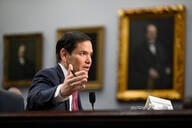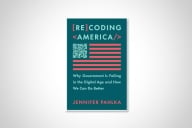You have /5 articles left.
Sign up for a free account or log in.
I was glad to see the accreditor ACICS has announced that it’s folding. It offered cover, and access to federal financial aid, to a host of bad actors in for-profit higher education.
For nonspecialists who haven’t already stopped reading—and bless you—accreditation comes in several flavors. One is programmatic; that kind applies to a specific department or major, as opposed to a college as a whole. For example, a good culinary program might boast accreditation from the American Culinary Federation. Accreditation for an institution as a whole has historically come in two varieties: national or regional. Perhaps counterintuitively, the regional ones are the more prestigious. That’s largely a function of history.
Either national or regional accreditation offers access to federal financial aid.
The regional accreditors used to have geographic monopolies: Massachusetts had NEASC (now NECHE); New York had MSCHE, Tennessee had SACS, and so on. Each accreditor is a membership organization supported by dues-paying members. Accreditation is awarded through an admittedly taxing form of peer review. Every few years—the number varies—a member institution hosts a visiting team of peers from other colleges covered by the same accreditor. It has to show that it’s meeting various standards around resources, governance, assessment and the like. Increasingly, accreditors have included “continuous improvement” as a standard, so it’s not enough to show that things are aboveboard and adequate. A college has to show also that it has processes in place that foster improvement over time.
The crucial point about regional accreditors is that for most of the last century, they had two traits that largely offset each other: they were monopolies, and they were based on peer review. The monopoly gave the peers the ability to have teeth, and peer review prevented overreach. A college that feared a poor showing couldn’t really shop for another regional accreditor, so it had no choice but to deal with it. And visiting teams knew they couldn’t go completely off the rails for fear of reciprocity when it was their turn.
The system worked, mostly, because those two elements of it propped each other up. Or, if you prefer, the two potential flaws (monopoly and inbreeding) functionally canceled each other out.
A few years ago, the previous federal administration repealed the geographic monopolies for regional accreditors. As if on cue, the state of Florida immediately mandated accreditor shopping by its public colleges.
Ordinarily, I’m not a fan of monopolies. As any decent economist can tell you, monopolies tend to use their market power to exploit their customers. Anyone who has lived in an area with only one internet provider knows how that works. In this case, though, there’s no incentive to exploit. Now we have “regional” accreditors that aren’t confined to their regions and that are compelled economically to compete with each other. As the Florida case demonstrates, that fundamentally shifts the balance of power. It sets off a potential race to the bottom.
I don’t know that anyone would design the system we have from scratch. Regionalism made sense when visiting teams had to physically visit; in the age of Zoom, that’s arguably less relevant. But putting regional accreditors into the same sort of competition with each other that national accreditors have been in for years is likely to lead them to behave more like the national ones, at least over time. As ACICS showed, that’s not great.
So, my plea to the Biden administration is this: congratulations on solving one issue with accreditation. While you’re at it, restoring unique regions for the regional agencies may prevent the next set of mistakes. It’s still early enough that you could, with minimal drama, put the toothpaste back in the tube. If you miss this opportunity, the downstream cost to students and taxpayers could make ACICS look like pocket change.



